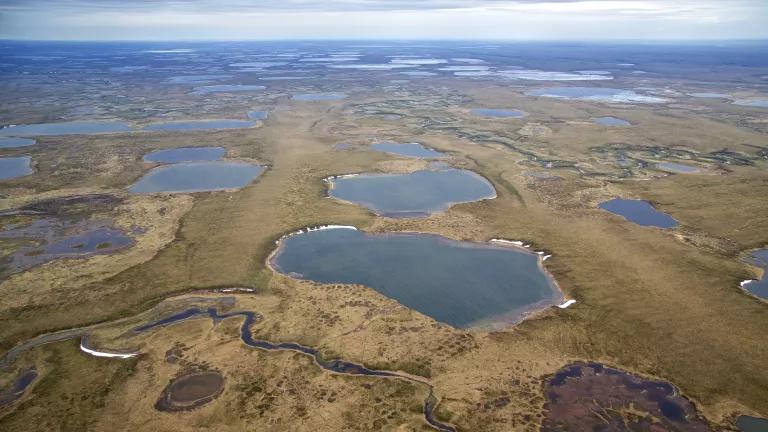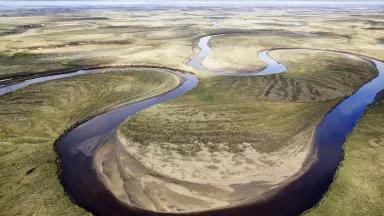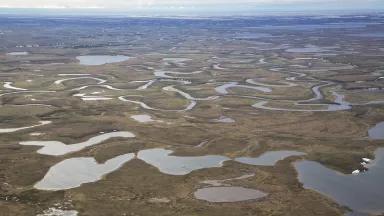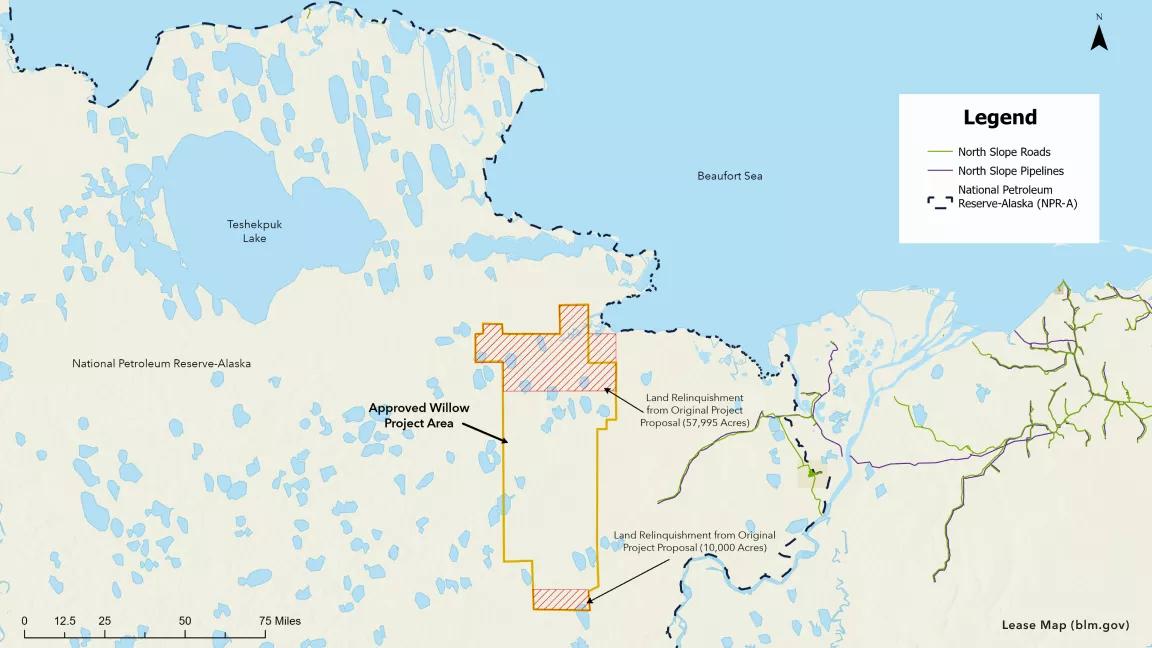Center for Biological Diversity et al. v. Bureau of Land Management et al. (Willow Project)
Case Status
Last Update

An aerial view over the northeast section of the National Petroleum Reserve in Alaska
Bob Wick/Bureau of Land Management
On March 13, 2023, the Biden administration green-lit an $8 billion ConocoPhillips oil drilling operation on the North Slope of Alaska’s Brooks Range in the National Petroleum Reserve. This massive “carbon bomb,” located on federal land, is known as the Willow Project—and it’s being pushed forward as scientists are telling us that there is simply no carbon budget left for new oil or gas fields, if we are to avoid the worst impacts of climate change.
Approval of the largest proposed oil project in the country not only flies in the face of the Biden administration’s promise to combat the climate crisis—it’s also illegal. Less than 48 hours after the U.S. Department of the Interior’s Bureau of Land Management issued its go-ahead, NRDC, alongside organizations represented by Earthjustice (Center for Biological Diversity, Defenders of Wildlife, Friends of the Earth, and Greenpeace), filed our lawsuit against the federal agencies that have failed to properly review and limit the project’s environmental impacts. Trustees for Alaska has also filed a legal challenge on behalf of Sovereign Iñupiat for a Living Arctic and other conservation groups.
The Bureau of Land Management erroneously concluded that it cannot deny or meaningfully limit the project’s scale or massive impacts. It constrained its own authority to consider less polluting and damaging alternatives with the legally faulty assumption that it must allow ConocoPhillips to fully develop all profitable oil on its leases—staggering supplies of oil, as the multinational fossil fuel company has expressed to its investors—while acknowledging the 260 million metric tons of gross carbon emissions expected from Willow’s life cycle.
The Biden administration also failed to assess Willow’s full climate impact by not fully evaluating the downstream greenhouse gas emissions of future oil development facilitated by the project once its infrastructure is in place. And it failed to explain its decision not to impose measures to mitigate the adverse impact of Willow’s downstream emissions on the reserve’s resources, such as its wetlands and wildlife. Meanwhile, the agencies charged with protecting threatened biodiversity failed to consider the climate impact of Willow on ice-dependent species like polar bears and Arctic ringed seals.
The Biden administration had the authority to consider meaningful alternatives to Willow, and to significantly curb its impacts. Yet despite the laws and intense public outcry, it chose not to. ConocoPhillips has now opened a new gravel mine and broken ground for the initial roadbuilding phase of its project.
Unfortunately, on November 9, 2023, the district court sided with ConocoPhillips and the Bureau of Land Management and ruled that Willow can proceed. NRDC and our partners intend to appeal the ruling to the Ninth Circuit—and continue fighting this illegally approved project.



